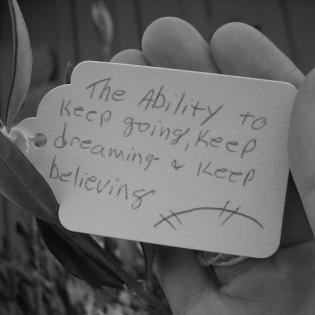Deliver Gratitude Day (9-12)
This lesson focuses on the meaning and benefits of gratitude. Teens research one aspect of gratitude in order to understand its relationship to health, happiness, or generosity. For their service project, they decide how they can 'deliver gratitude' to a deserving person or group. They will then complete a service such as writing thank you notes.
The learners will:
- discuss examples of giving and receiving gratitude.
- research and discuss the meaning of gratitude and its impact.
- do something to show gratitude and make a positive difference.
YouTube video: The Gratitude Experiment: https://www.youtube.com/watch?v=oHv6vTKD6lg
- gratitude: the state of appreciation and gratefulness; thankfulness
- philanthropy: giving time, talent, or treasure and taking action for the common good.
- opportunity cost: the next best alternative that must be given up when a choice is made. Not all alternatives, just the next best choice
- GivingTuesday: the second biggest giving day of the year fueled by individuals advocating for what they care about through social media.
Teens make a gratitude challenge at home, encouraging everyone in the family to express gratitude regularly.
Follow the project with a brief reflection.
- Discuss the impact of their project on the person they thanked. Reflect on how they felt when they said thank you.
- Student groups present a slideshow or social media message to encourage others to express gratitude and “pay it forward.”
Instructions
Anticipatory Set:
Watch this YouTube video of The Gratitude Experiment: https://www.youtube.com/watch?v=oHv6vTKD6lg
Then quietly write a list of things and/or people they are grateful for.
Have participants stand in two circles made up of the same number of people. One circle faces out, and the other circle faces them one to one. On your cue, they tell the person facing them one thing they are grateful for. Then the outer circle rotates clockwise, so everyone is facing someone new. Repeat several times - long enough for them to stretch themselves to think of new things, but not so long they lose interest.
Share the Science of Giving on the white board and talk about the benefits of giving. Relate giving to gratitude - when someone gives to us, we feel gratitude, and when we give, we inspire gratitude in others.
Give teens time to conduct research about gratitude with the intent of finding an interesting health benefit or correlation to happiness or generosity. Some ideas to get started may come from these questions: How does gratitude impact happiness? How can people develop gratitude? What is the relationship of gratitude and generosity?
They each write a statement that describes what they learned and include the source.
Put all the statements on a central space so they can read them all/listen to each person read theirs. Start grouping them in like categories and discuss similarities in findings. They may conduct further research to clear up confusion or contridictions. These statements may be shared creatively with other to encourage healthy expressions of gratitude for the common good and happiness of the community.
Taking voluntary action and giving has a cost to the giver, something they give up, which may be in time, money, effort, energy, or a missed opportunity.
The cost of volunteering is simply something you have give up in order to help another person. Opportunity cost is "the next best alternative that must be given up when a choice is made. Not all alternatives, just the next best choice." For example, when you volunteer to clean up trash by the river, you may give up the opportunity to play soccer after school. When you spend time making advocacy messages for the Humane Society, the opportunity cost may be losing time connecting with friends on social media. Helping pass out water to runners at a marathon may cost the volunteer energy.
Before taking action, the giver decides whether the benefits of giving time are greater than the opportunity cost.
Ask, "Are you willing to give up some time or energy to contribute to someone else's happiness?"
Service Project:
Think about someone you admire or appreciate. Discuss how the class or individuals can "deliver gratitude" to someone special. The teens may write a thank you letter or make a video telling them what they admire and how they have impacted others.
Other ideas:
- Find a meaningful quote about gratitude. Copy it and illustrate it, and give it as a gift or post it in a public place to inspire others.
- Design a gratitude challenge to encourage people in your "community" to express and become more aware of gratitude.
Put a gratitude quote on the board. Students write a paragraph explaining what the quote means to them, including a definition of gratitude and its value.
-
“There are only two ways to live your life. One is as though nothing is a miracle. The other is as though everything is a miracle.” - Albert Einstein
-
“None is more impoverished than the one who has no gratitude. Gratitude is a currency that we can mint for ourselves, and spend without fear of bankruptcy.” - Fred De Witt Van Amburgh
